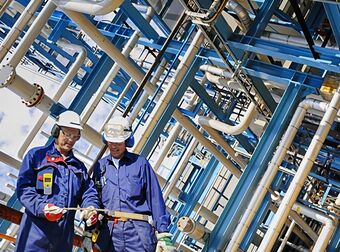 Since 2001, Technology Learning Center as established itself one of the leading trade schools for aspiring pipefitting professionals. With pipefitting careers in high demand, you may be interested in the profession, but not be fully aware what exactly what a professional pipefitter does on a day-to-day basis. With that in mind, here is an overview of this profession that, according to the US department of Labor, is expected to grow in demand at the rate of 14% annually through the year 2025. In short, pipefitters start with a blueprint and make it a reality. These craftsmen are responsible for every aspect of the installation and maintenance of piping systems. Pipefitters fitters work with metals such as carbon and stainless steel, as well as other alloy metals. These metals are shaped through welding and bending to fit specifications for industrial use. Fitters are involved in the process from planning to installation, and will work with tools such as levels, grinders, dies, and welding torches. A steamfitter will typically create a sketch or a blueprint of a pipe installation, or be called upon to interpret existing blueprints. During this process, the fitter is also responsible for selecting the type and size of the pipe, as well as determining other related materials and equipment that are required for the project. From there, the fitter will manipulate metal to form the pipes according to specifications. Types of manipulation that a pipefitter will perform on pipes and metal include but are not limited to:
When the pipes are ready, the fitter will transport them on location and install them. The installation is very important and workers must take care to avoid obstructions and also interference with work currently going on in the building. After installation is complete, several tests are performed to check for any leaks, support issues, and performance against high-pressure environments. Adjustments are made to ensure the system will run smoothly until the next maintenance, which is usually performed by a steamfitter. They can also be called upon to repair existing systems or replace pipes as needed.
0 Comments
|
Archives
April 2023
Categories
All
|
|
Technology Learning Center
11 Buffum Dam Rd. Oxford, MA 01540 508-987-1852 |
Serving all of central Massachusetts and beyond. including: Oxford, Worcester, Charlton, Dudley, Southbridge, Douglas, Sutton, Auburn, Leominster, Fitchburg, Webster, northeast CT and much more.
HVAC Training Courses, Oxford, MA I Steam Engineering Online Courses I Trade School, Oxford, MA (Worcester County) © COPYRIGHT 2023 ALL RIGHTS RESERVED.

 RSS Feed
RSS Feed







